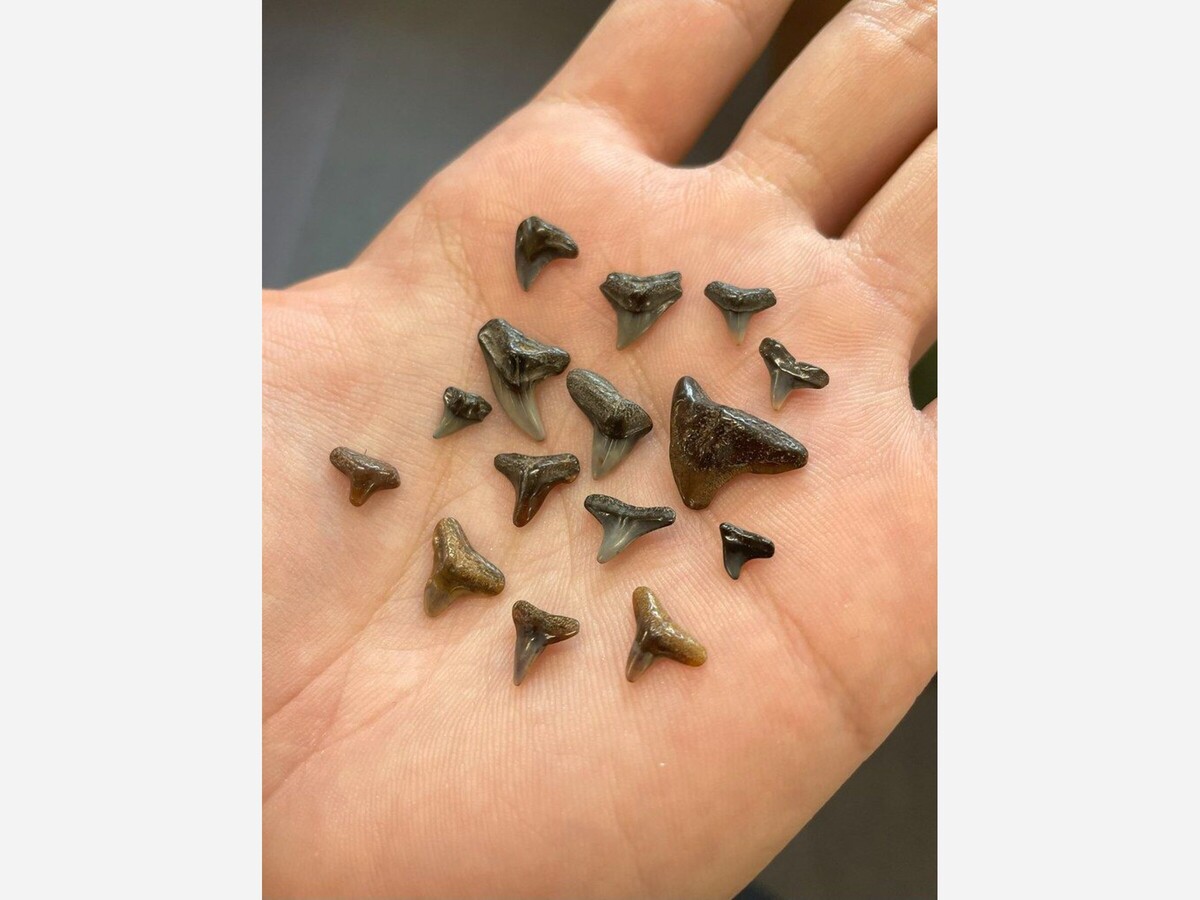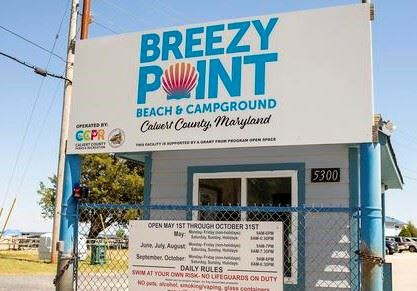Image


An assortment of fossilized shark teeth, as photographed by Dennis Garcia and submitted to the 2013 DNR Photo Contest.
Walking the sandy shorelines of the Chesapeake Bay can be a tranquil and rewarding experience for lovers of Maryland’s outdoors. Some beachcombers pursue sea glass and shells, while some have been lucky enough to find prehistoric fossils including shark teeth and ancient artifacts such as arrowheads.
The majority of shark teeth found in Maryland are remnants of an ancient past, during the Miocene era, which ranged from 10 to 20 million years ago. At that time, dozens of shark species lived in what is now inland territory. Now, fossils and teeth are uncovered where the Chesapeake Bay meets the banks of Maryland’s waterfront locales – most commonly in Calvert and St. Mary’s counties – but also found anywhere turbulent water is present.
Collecting fossils and shark teeth is permitted on some public lands, with some restrictions. Fossils embedded in the cliffs and river banks at the sites listed below are protected by law – the only areas where collecting is permitted is along beach shorelines. Once determining where fossil collecting is allowed and by what methods — which should be confirmed by visiting the following locations’ website — prospective collectors will find that it’s easy to get started. Sieves can help visitors sift through sand and other shoreline debris, though they aren’t necessary – a keen eye and a positive attitude have produced plenty of souvenirs for Marylanders looking in these five fossil-hunting spaces open to the public.
Calvert Cliffs State Park
Calvert Cliffs in Lusby is the quintessential shark tooth hunting destination in Maryland. The eroded shoreline offers a glimpse into the Chesapeake Bay’s ancient occupants, as fossilized remains are exposed by the constant weathering of the park’s cliffs. Those who sift through the beach’s sand can find teeth from tiger sharks, hammerhead sharks, sand sharks, and even the storied megalodon.
Fossil hunting can be done at the open beach area at the end of the red trail, approximately 1.8 miles from the parking lot. The park’s trademark features – the cliffs themselves – must be avoided by visitors, as landslides pose a risk, and fossil-collecting underneath the cliffs is strictly prohibited.

An assortment of fossilized shark teeth and ray plates found at Flag Ponds Nature Park. Maryland DNR photo.
Flag Ponds Nature Park
Managed by the Calvert County Department of Parks and Recreation, Flag Ponds Nature Park in Lusby is a popular area for fossil hunting. The park’s beaches are a short, half-mile hike away from the parking lot, though an expansive trail network that winds through the park and allows visitors to stop at observation platforms overlooking ponds, the Chesapeake, and the visitor center.
The beach at Flag Ponds doesn’t have cliffs or expansive shoreline erosion, though fossilized remains and shark teeth can still be found washed up in the surf, especially during low tide and after storms.
Nanjemoy Wildlife Management Area
The Purse Area – formerly known as Purse State Park – is part of Nanjemoy Wildlife Management Area and is an undeveloped area ideal for hunting, bird watching, shore fishing, and fossil hunting. Uniquely situated on the Potomac River in Charles County, the shark tooth hunting at Purse differs greatly from collecting along the Chesapeake Bay shoreline.
Here, visitors will most likely find shark teeth around one-quarter inch up to an inch long, which come from the Paleocene era, 56 to 66 million years ago. The Paleocene deposits are more than twice as old as the Miocene fossils found at Calvert Cliffs.
Douglas Point Special Recreation Management Area
North of the Purse Area in Nanjemoy, Douglas Point is a commonly known destination for fossil collectors targeting shark teeth and other formations. Managed by the federal Bureau of Land Management, the immediate access to the banks of the Potomac allow for fossils from the Aquia geological formation – a geological layer dating back to the Paleocene epoch – to be found.
While Douglas Point offers access to one of the most productive areas of the Potomac’s shoreline, its remote nature means it’s less-developed, offering limited infrastructure. Visitors should prepare ahead of time with water, snacks, and any tools needed to sift through the sand.
Breezy Point Beach and Campground

Chesapeake Beach is home to the Breezy Point Beach and Campground, operated by the Calvert County Department of Parks and Recreation. One of the more accommodating fossil-seeking destinations, Breezy Point is family-friendly and has a half-mile stretch of shoreline for treasure seekers. Here, visitors can also fish and crab from a 200-foot pier, use picnic areas and restroom facilities, rent a campsite, or barbecue on outdoor charcoal grills.
This popular summer destination does charge a daily entrance fee during peak season, and is known to close once full to capacity on its busiest days. That said, if an enjoyable beach experience is preferred while fossil-hunting, it’s hard to beat Breezy Point for first timers or those looking to take advantage of the resources available.
Next Steps
First-time collectors should remember that patience and persistence are key. Timing visits around low tide or after a recent storm can increase chances of uncovering new finds, as wave action tends to churn up previously untouched fossils.
Whether you’re looking for a serene hike that ends in a fossil-filled beach or a family-friendly day trip with welcoming amenities, Maryland offers a range of fossil hunting spots that cater to all experience levels. Just be sure to follow park rules, respect the natural landscape, and never dig into cliffs or restricted areas.